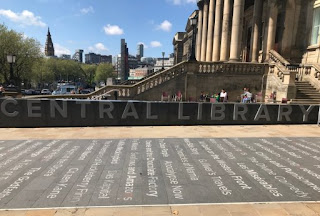Carol Burnier, Exhibitions Registrar, Tate Modern
UKRG AGM & Loans in, Friday 18th October 2019
Carol summarised the world of loans in as “expect the unexpected”. You don’t have complete control as owners and lenders have their own requirements and expectations. Where these differ from what we might be willing or able to accept then the exhibition registrar needs to negotiate solutions. An average exhibition at Tate has about 50 lenders and between 100-200 loan objects. That’s a lot of negotiating but it is normally successful. It is rare that works must be dropped from exhibition lists because it has not been possible to meet lenders requirements.
Key to success is the involvement of exhibition registrars at least two years ahead of the exhibition opening (longer if it is a tour and Tate are the first venue) Firstly the exhibition registrars review the list of proposed lenders and advise the management team of the likely requirements of known lenders. If one of the Tate registrars hasn’t worked with a specific lender before then they can reach out to the rest of the team including colleagues at Tate Liverpool and Tate St Ives. Often Tate are borrowing from the same pool of lenders, so requirements are familiar, and relationships already established. Of course, there will always be new lenders, and this is where the unknown element comes in. Lenders may have unique requirements around many aspects, such as shipping, display methods, security, couriers or per diems.
It is important to recognise that negotiation styles vary widely across the world. UK registrars are very solution focused and we have the flexibility to make changes, sometimes this flexibility is not an option for other organisations. Some registrars have very strict processes within which they must operate. Carol recalls being asked in one case for a utility bill to prove that Tate existed!
It is important to establish and open, honest and collaborative dialogue. Sometimes asking the lender and open questions such as “how do you think we can move this forward” will elicit a solution. If you see something is going to be a problem try and come up with a solution before discussing it – don’t present problems, present solutions!
It is important to know and understand the GIS guidelines as you will need to be able to confidently explain these to lenders who are unfamiliar with them. Getting lenders to accept indemnity is especially important for national institutions as they need DCMS permission to use commercial insurance. Remember that sometimes confusion can arise with international lenders over immunity and indemnity!
If you have built up a good relationship with the lender during the run up to the exhibition then if things go wrong in the final phase (such as cargo shipments being bumped by horses!) the relationship you have built up will help the lender trust you.
Many situations are not always black and white, there are a lot of grey areas, and this is where you use your experience or reach out to colleagues and the wider UKRG network for support if required.
Carol finished of by summarising the key points “trust your experience, reach out to the expertise around you and expect the unexpected”
Thanks to Carol for sharing her knowledge and to Blackwall Green for the travel bursary.
Jacqui Austin, Lead Registrar: Loans, touring & partnerships, National Galleries of Scotland













